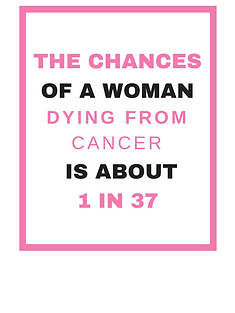
At this time there are 2.9 million Breast Cancer survivors in the US. It is the second largest cancer killer of women next to lung cancer. For more than 13 years, most research and clinical trials have devoted testing efforts to find a vaccine for breast cancer by targeting a protein, peptide or antigen in the cancer cell. Some research has also focused on whole-cell vaccines and some on dendritic-cell vaccines. With the 5 year test period completed, the breast cancer recurrence rate was cut by 50% by military researchers. Other researchers at the Cleveland Clinic have developed testing for a vaccine that should be available by 2018. We also send pharmaceuticals and mammography equipment to third-world countries to help indigent patients in need.
ABOUT BREAST CANCER
What is Breast Cancer?
Breast cancer starts when cells in the breast begin to grow out of control. Breast cancer can start from different parts of the breast. Most breast cancers begin in the ducts that carry milk to the nipple and some can start in the glands that make breast milk, among others.
Changes or mutations in DNA can cause normal breast cells to become cancerous. Certain DNA changes are inherited and can increase the
risk of breast cancer. What you eat and how much you exercise, can also increase your chance of developing breast cancer, but it’s not yet known exactly how some of these risk factors cause normal cells to become cancer. Hormones seem to play a role in many cases of breast cancer.
1 in 8 women will be diagnosed with breast cancer in their lifetime

Signs and Symptoms
Finding breast cancer as early as possible gives you a better chance of successful treatment. The most common symptom of breast cancer lumps, which should be checked out by doctor immediately. Others are swelling of breast or parts, skin irritation or dimpling, pain on parts of breast, scaliness, redness or thickening and nipple discharge or retraction.
Risk Factors For Getting Breast Cancer.
-
Being Female and Aging
-
Menstruation beginning before 12 and menopause continuing until after 55.
-
Mother, sister or daughter who has had breast cancer.
-
Slight increase if you are using the pill or have in the past 10 years.
-
Never having had children or had first child after age 30.
-
Drinking 1 or more alcoholic drinks a day or contaminated drinking water can cause breast cancer
-
Being overweight, especially after menopause.
-
Physical inactivity. Exercise and running will help reduce your risk of cancer.
-
Having had chest radiation therapy as a child or young adult.
-
Having the BRAC1 or 2 genetic mutations will result in an 80% chance of getting breast cancer.
-
High breast tissue density, the ratio of glandular to fatty tissue in the breast.
Screening
Screening tests are used to find breast cancer before it causes any warning signs or symptoms. Screening tests can find breast cancer early, when the chances of survival are highest.
Regular screening tests reduce your chance of dying from breast cancer.
Death rates from breast cancer dropped from 1989 to 2007. Since 2007, breast cancer death rates have been steady in women younger than 50, but have continued to decrease in older women.
These decreases are believed to be the result of finding breast cancer earlier through screening and increased awareness, as well as better treatments. Breast cancer screening tests include clinical breast exam and mammography. For some women at higher risk of breast cancer, breast MRI may also be used.
